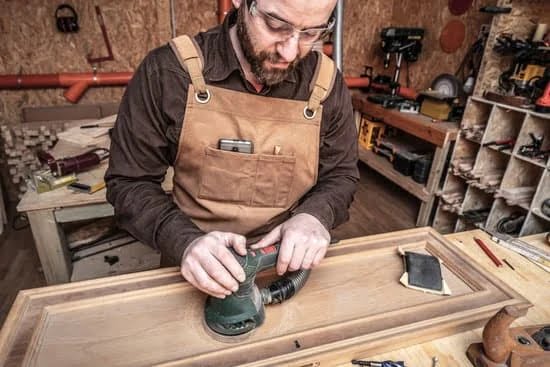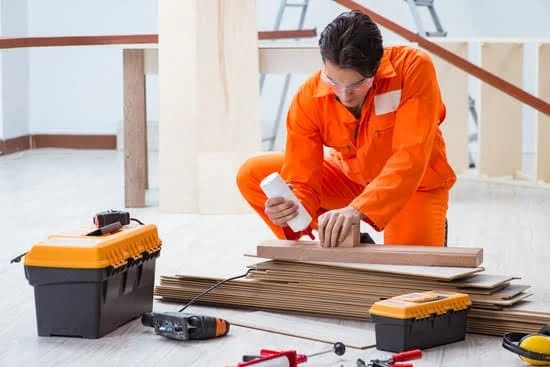Are you looking to bring your woodworking projects to life but don’t have the space for a dedicated workshop? Setting up a woodworking shop in your garage can be a practical and efficient solution. In this article, we will provide you with valuable tips on how to set up a woodworking shop in the garage, starting with assessing the available space and determining the layout for your shop.
Before diving into the exciting world of woodworking, it’s essential to assess the space in your garage and plan the layout of your woodworking shop. This initial step will help you make the most of the available area while ensuring that you have enough room for all your tools and equipment. From clearing out clutter to determining ventilation and lighting needs, every aspect should be carefully considered to create a functional and safe work environment.
In addition to providing guidance on organizing and clearing out your garage space, we will also discuss important considerations such as ventilation, safety measures, electrical requirements, and storage solutions specifically tailored for a woodworking shop in the garage. With our comprehensive list of must-have tools and equipment, along with step-by-step instructions for building a custom workbench and optimizing lighting, you’ll be well-equipped to transform your garage into a fully functional woodworking shop.
Clearing and Organizing
When setting up a woodworking shop in your garage, one of the first steps is to clear out the clutter and organize the space to make room for your tools and equipment. This process may seem daunting, especially if your garage has accumulated years’ worth of miscellaneous items, but with some tips and strategies, you can efficiently transform it into a functional woodworking workshop.
Assessing the Current State
Before diving into clearing out the clutter, take some time to assess the current state of your garage. Identify areas that are heavily congested with items and consider what can be discarded, donated, or relocated to create more space. It’s also helpful to measure the available space in your garage so that you can plan an efficient layout for your woodworking shop.
Organizing Strategies
Once you’ve decluttered the garage, it’s essential to implement effective organizing strategies to maximize the available space. Consider installing shelving units or wall-mounted organizers to keep your tools and supplies off the floor and easily accessible. Utilize clear storage bins or labeled containers to store smaller items such as screws, nails, and other hardware. Additionally, creating designated zones for different tasks within the workshop will help streamline your woodworking projects.
Creating a Functional Layout
After clearing out and organizing the space, it’s time to think about creating a functional layout for your woodworking shop. Take into consideration factors such as workflow, accessibility of tools and equipment, and safety when arranging workbenches, machinery, and storage areas. By carefully planning the layout of your woodworking shop in the garage, you can optimize efficiency and productivity while working on your projects.
Ventilation and Safety
Setting up a woodworking shop in your garage can be a rewarding endeavor, but it’s important to prioritize ventilation and safety to ensure a healthy and secure working environment. Here are some key considerations for setting up proper ventilation and safety measures:
- Ventilation: Proper ventilation is crucial in a woodworking shop to remove dust, fumes, and other airborne particles that can pose health risks. Consider investing in a good quality dust collector or an air filtration system to maintain clean air in the workspace. Additionally, ensuring adequate airflow with open windows or exhaust fans can help prevent the buildup of harmful particles.
- Personal protective equipment (PPE): When working with wood, it’s essential to use appropriate PPE to protect yourself from potential hazards. This includes wearing safety goggles, hearing protection, dust masks, and gloves when operating power tools or handling wood materials. Make sure to educate yourself on the specific PPE requirements for different woodworking tasks.
- Fire safety: Woodworking shops can be prone to fire hazards due to sawdust, oily rags, and flammable materials. Implementing fire safety measures such as having a fire extinguisher within reach, keeping the workspace tidy and free of clutter, and properly storing flammable materials can help minimize the risk of fires.
By prioritizing ventilation and safety measures when setting up your woodworking shop in the garage, you can create a comfortable and secure working environment where you can pursue your woodworking projects with peace of mind. Taking the time to assess these factors will not only enhance your overall experience but also contribute to creating a sustainable workspace for years to come.
Essential Tools and Equipment
Setting up a woodworking shop in your garage can be an exciting and fulfilling endeavor, but it’s essential to have the right tools and equipment to get started. Here is a comprehensive list of the must-have tools and equipment you’ll need for your basic woodworking shop:
1. Workbench: A sturdy workbench is the heart of any woodworking shop. It provides a flat, stable surface for working on projects, assembling furniture, and performing various tasks. Consider building your own workbench to customize it to fit the available space in your garage.
2. Table saw: A table saw is a fundamental tool for cutting large pieces of lumber and plywood. Look for a quality table saw with safety features such as blade guards and riving knives to protect yourself during use.
3. Hand tools: Essential hand tools for woodworking include chisels, planes, hammers, screwdrivers, tape measures, clamps, and more. These tools are indispensable for shaping wood, assembling projects, and making precise cuts.
4. Power tools: While hand tools are essential, power tools can significantly accelerate your woodworking projects. Consider investing in a cordless drill, circular saw, jigsaw, router, and random orbital sander to expand your capabilities in the workshop.
5. Dust collection system: Woodworking produces a lot of dust and debris that can pose health hazards and create a messy workspace. Install a dust collection system or invest in a high-quality shop vac to keep your garage clean and safe.
6. Safety gear: Prioritize safety by wearing eye protection, hearing protection, gloves, and a dust mask when working with wood and power tools.
By gathering these essential tools and equipment for your woodworking shop in the garage, you’ll be well-equipped to pursue various projects while creating functional items that bring joy to you or others around you.
Storage Solutions
Setting up a woodworking shop in your garage requires careful planning, especially when it comes to storage solutions. With limited space available, it’s important to make the most of every inch and ensure that your wood, tools, and supplies are organized and easily accessible. Here are some creative storage ideas to efficiently organize and store everything you need for your woodworking projects.
One effective way to maximize storage in a small garage is by using vertical space. Install shelving units or wall-mounted cabinets to keep your tools and supplies off the floor and neatly stored. This not only saves space but also makes it easier to find what you need without having to dig through cluttered piles.
Another helpful storage solution is investing in stackable containers or bins for storing smaller items such as nails, screws, and other hardware. Label each container accordingly so you can quickly locate the specific items you need for a project. Additionally, consider using clear containers so you can easily see the contents without having to open each one.
For organizing wood in a limited garage space, a lumber rack is an excellent choice. Whether you purchase one or build your own, a lumber rack keeps long pieces of wood neatly stacked and out of the way. This helps prevent tripping hazards while also protecting your wood from damage. Don’t forget to utilize any overhead space by installing ceiling-mounted racks or hooks for hanging tools or storing lesser-used items.
Overall, implementing these creative storage solutions will not only help keep your garage organized but also create a safer and more efficient workspace for all your woodworking projects. By utilizing vertical space, investing in stackable containers, and effectively using overhead space, you can make the most of a limited garage area when setting up your woodworking shop.
Electrical Requirements
When setting up a woodworking shop in your garage, it is essential to assess the electrical requirements to ensure that the garage’s electrical system can support the machinery you plan to use. The first step is to evaluate the power needs of your woodworking tools and equipment. Most power tools will have a label indicating their voltage and amperage requirements.
Make a list of all the tools you intend to use and their respective power needs. This will help you determine if your garage‘s electrical system can handle the load or if any upgrades are necessary.
If you find that your garage’s electrical system is not sufficient for your woodworking shop, consider consulting with a licensed electrician to assess the situation. They can determine if your current electrical panel has enough capacity or if an upgrade is needed. Upgrading may involve installing a subpanel dedicated to the woodworking shop, which will provide additional circuits for powering your tools and equipment without overloading the existing electrical system.
Another aspect to consider when addressing the electrical requirements for your woodworking shop is implementing adequate safety measures. This includes installing ground fault circuit interrupters (GFCIs) on all outlets to protect against potential electric shock, as well as ensuring that all wiring and outlets meet local building codes and safety standards.
It is important to prioritize safety when working with electricity, especially in a space like a garage where flammable materials and sawdust are present. By carefully assessing and addressing the electrical needs for your woodworking shop, you can create a safe, efficient, and functional workspace in your garage.
| Electrical Requirements | Guidance |
|---|---|
| Assess power needs of tools | Determine voltage & amperage requirements |
| Consult with electrician | Assess current capacity & consider upgrades |
| Safety measures | Install GFCIs & ensure wiring meets safety standards |
Workbench Construction
When setting up a woodworking shop in your garage, one of the most crucial elements is the workbench. A sturdy and functional workbench is essential for completing woodworking projects effectively and safely. Building a workbench tailored to fit the available space in your garage requires careful planning and attention to detail. Here are some step-by-step instructions for constructing a workbench that meets your specific needs.
Gather Materials and Tools
Before you begin building your workbench, gather all the necessary materials and tools. The materials typically include lumber, plywood, screws, wood glue, and a finish of your choice. As for tools, you will need a saw, drill/driver, tape measure, square, and clamps. It’s important to have everything on hand before you start construction to avoid interruptions during the building process.
Building the Frame
Start by cutting the lumber to create the frame for your workbench. Measure and cut four legs to the desired height of your workbench. Then, cut additional pieces of lumber to create the top frame and bottom shelf frame. Assemble the frames using wood glue and screws, ensuring they are square and sturdy. This will provide a solid foundation for your work surface.
Adding the Work Surface
Once the frames are constructed, it’s time to add the work surface. Cut a piece of plywood to the desired size for the top of your workbench. Attach it securely to the top frame using screws, making sure it is level and smooth. If desired, you can also add a bottom shelf using another piece of plywood or lumber.
By following these step-by-step instructions, you can build a custom workbench that fits perfectly in your garage woodworking shop. Tailoring the dimensions to fit your available space ensures that you maximize functionality without sacrificing valuable room in your garage.
Lighting Considerations
In conclusion, setting up a woodworking shop in your garage can be a fulfilling and practical endeavor for anyone with a passion for woodworking. By carefully assessing the available space, clearing out clutter, and organizing the area efficiently, you can create a functional workspace for your projects. Additionally, it is essential to prioritize ventilation and safety measures to ensure that your woodworking shop is a safe environment.
Equipping your woodworking shop with essential tools and equipment is crucial for completing projects effectively. From workbenches to table saws and hand tools, having the right equipment on hand will make all the difference in your woodworking endeavors. Furthermore, implementing creative storage solutions will help maximize the use of limited garage space by efficiently organizing and storing wood, tools, and supplies.
Lastly, don’t overlook electrical requirements and lighting considerations when setting up your woodworking shop in the garage. Ensuring that the garage’s electrical system can support your machinery and optimizing lighting to create a well-lit and comfortable workspace are vital aspects that contribute to a successful woodworking setup. With careful planning and attention to these details, you can transform your garage into a fully functional woodworking shop that meets all your project needs.
Frequently Asked Questions
What Do You Need to Set Up a Wood Shop?
To set up a wood shop, you will need essential tools such as a table saw, miter saw, band saw, router, power drill, and hand tools like chisels, hammers, and measuring equipment. Additionally, you’ll need a sturdy workbench, adequate lighting, ventilation system, dust collection system, and storage for wood and supplies.
Safety equipment like goggles, ear protection, and dust masks are also crucial.
Can You Do Woodworking in a Garage?
Yes, woodworking can definitely be done in a garage. With proper planning and organization, a garage can be transformed into a functional workshop space for woodworking projects. You may need to consider insulation to regulate temperature variations and proper lighting for visibility when working on intricate projects.
How Do I Plan a Garage Workshop?
Planning a garage workshop involves carefully considering the layout to optimize space usage. This includes evaluating the placement of tools and workbenches to ensure efficient workflow. Adequate electrical outlets should also be considered to power your tools.
Storage solutions for wood stock and supplies should also be incorporated into the plan to maintain a clean and organized workspace. Lastly, safety measures like fire extinguishers and first aid kits should also be part of the planning process.

Hi everyone! I’m a woodworker and blogger, and this is my woodworking blog. In my blog, I share tips and tricks for woodworkers of all skill levels, as well as project ideas that you can try yourself.





